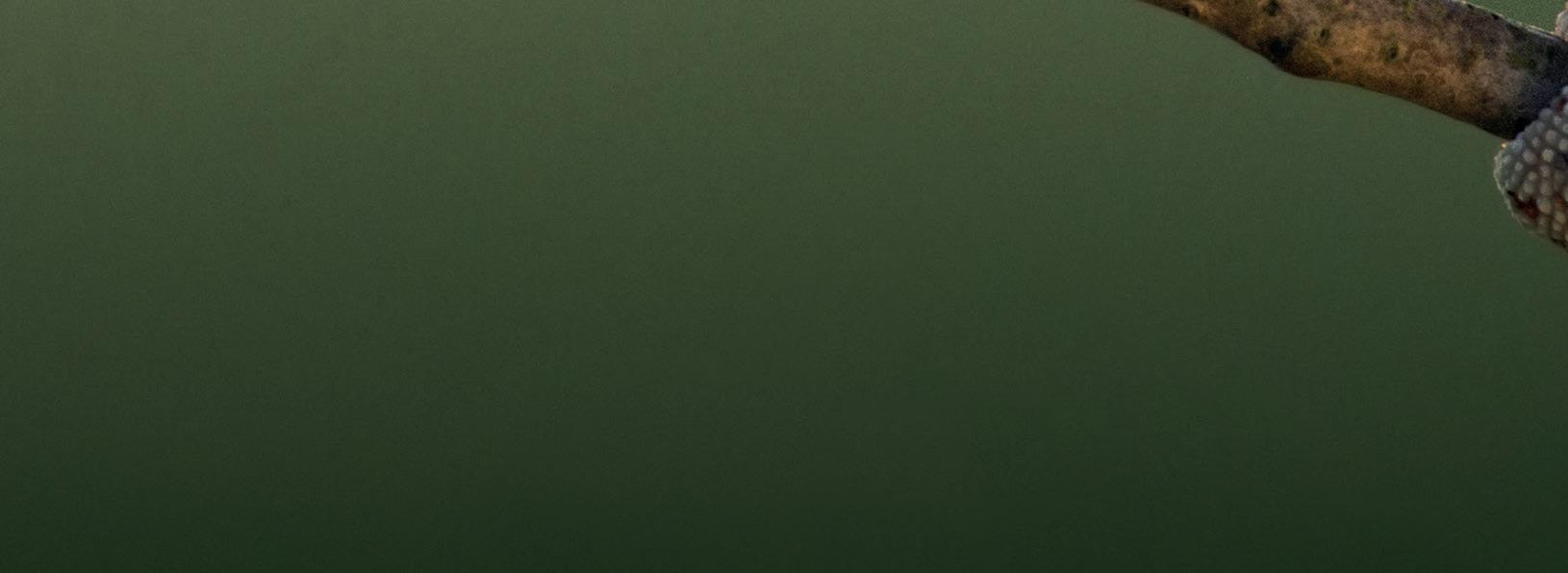
3 minute read
LIVEFOOD LOWDOWN
Whether it’s crickets and locusts or cockroaches and bean weevils, there’s a lot to learn about livefood. EK Magazine editor Tony Jones digs deep into the bug-life to explain everything keepers need to know.
In the store
Advertisement
SO MANY BUGS






Most pet stores which cater for reptiles and exotic pets will supply a decent range of the most popular livefood options. Crickets, locusts and mealworms will almost definitely be available, and perhaps a few morio worms and wax worms too. Specialist stores will usually have a wider selection, extending to cockroaches, snails, worms, flies and more. We’ll go into more detail about the features and benefits of each species later in this article, but for now, let’s look at how to shop for the best bugs possible.
Quality Control
Storage and shelf life are important considerations for stores selling livefood. While it might seem like the obvious thing to do, storing tubs of bugs near to warm reptile enclosures or in a shop window isn’t a great idea. Instead, they should be kept cool in a kind of suspended animation to keep the insect’s metabolism low. That’s because warm bugs will want to feed, and an insect that feeds will need to defecate. Warm bugs will eat their fellow tub mates or the moist faeces they produce. For the record, storing livefood at temperatures around 15° – 18° C is best, although during the summer this might be difficult.
Fresh Bugs
Most stores get fresh deliveries of livefood on the same days each week. Find out from the store which days their fresh stocks are due. That way you can buy your bugs when they’re in tiptop condition.

Selecting Sizes


All invertebrates have an exoskeleton which they will shed each time they grow. Each growth stage is called an ‘instar’, with the first shed called the 1st instar, the second shed is, obviously, 2nd instar, and so on right up to adulthood. Fully grown crickets and locusts are easily identifiable because they have wings. For most livefood species, stores will have a selection of sizes available –small, medium and large etc. Choosing the correct size to feed to your animal is important.

While it can be fascinating to watch mammals and birds devouring giant bugs, it’s not a good idea to feed large prey items to reptiles or amphibians. As a guide, choose bugs which are approximately the same size as the distance between your animal’s eyes. This will ensure the bug can be easily swallowed and efficiently digested, thereby reducing the risk of blockages and digestive issues.
Medium and large-sized bugs are invariably the most popular size, so stores will stock more of these than any other. Other sizes are usually in less demand so, if you regularly need small bugs, it might be worth asking your store to order them especially and keep them to one side for you. Some stores even provide a weekly delivery service, a loyalty scheme or some kind of preferential service for regular customers. Getting to know the staff at your store is always a good idea!
LOCUSTS ARE No.1
Of all the different livefoods available in the UK, locusts are by far the biggest seller, clearing three times the number of tubs as their nearest rival –the brown silent cricket. Mealworms come in a close third, followed by wax worms and black field crickets respectively, both a long way behind the top three best sellers.
If you want to use some of the more unusual species of livefood on the market it’s usually a good idea to let your store know what you want well in advance, as most stores will need to order these in especially.

At home STORAGE, GUT LOADING AND SUPPLEMENTS

The worst thing you can do with your crickets and locusts is to leave them in the tub. While stores need to keep livefood cool to keep the bugs’ metabolism low, this is only good practice for short periods while they are kept in the tubs for sale. Once home, the aim should be to ensure the bug you feed to your animal is as nutritious as possible.
The best way to go about this is to set up the bugs in an enclosure where they can be properly fed and watered – a process known as ‘gut loading’. Crickets and locusts especially lose a great amount of their nutritional value if their digestive systems are empty because of their fast metabolism. A hungry bug will use their body tissue as energy, leaving only an empty, fibrous exoskeleton shell for your animal to eat.
You’ll need a ventilated, escape-proof container to house your bugs, plus some form of heating so they can efficiently digest their food. A heat mat works well for this. They’ll also need something to use as a perch. Egg boxes and trays are ideal because they’re cheap, easily available, biodegradable and disposable.
There are plenty of good gut-loading bug foods available, so provide a shallow dish of this in your bug enclosure at all times, and be sure to change it regularly. Finally, it’s important to understand how vital moisture is to crickets and locusts, given that it makes up the vast majority of their diet. Slices of potato and carrot are great for crickets, and locusts will relish leafy greens, but you can also use bug-gel products used to provide water for spiders and other invertebrate pets. The choice is yours.










